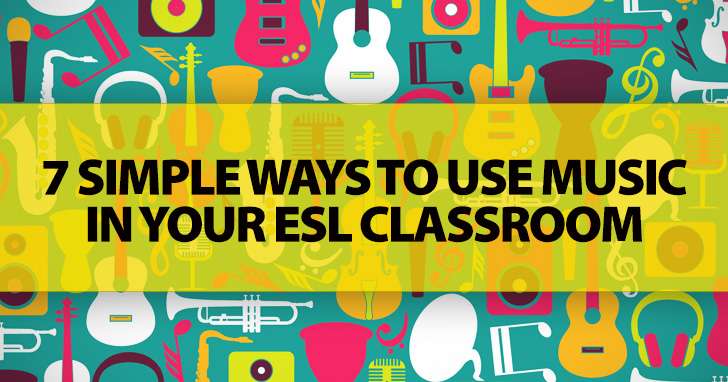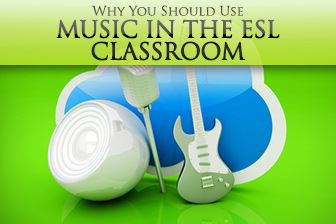Time to Tune In: 7 Simple Ways to Use Music in Your ESL Classroom


And if that alone wasn’t reason enough to use music in your ESL classroom, think about this. Music and language learning are related. Both are human communication through sound. If you have used music in your ESL classroom, you know what an enjoyable and effective means it can be for language learning. If you haven’t tried using music in the classroom, you should. Here are some reasons why.

Since almost everyone likes one sort of music or another, your students will enjoy bringing a melody into the classroom. Music keeps students engaged and increases participation. Students who have fun learn better, and music can bring a new kind of fun to learning for your students. Using a variety of music styles in the classroom will help you engage the majority of your students. Include classical music, simple tunes and today’s popular music when possible. Encourage your students to share their favorite songs when appropriate, and make sure your students respect and accept the tunes their classmates share.
Music can help your students learn more about language itself. Besides teaching new vocabulary, language learning set to music will help your students understand rhythm, stress and intonation. You can also use music to teach pronunciation, pacing and rhyme. Simple jingles are an entertaining and engaging way to teach dry grammatical concepts, and students will remember these rules better when they find themselves humming the lyrics several times throughout the week.
Studies on music have shown that it increases concentration, improves memory and decreases stress. (Ask your students and you are sure to find they are interested in all three.) Simply playing classical music in the background as you instruct or your students study will make a difference in their performance. And let’s not forget that music is also one of the learning styles many of your students will possess, so including music in your classroom will help your students pay attention and remember the information you present.
Music can do more than teach concepts. Background music can improve overall learning (particularly classical music), or music can help you transition your students from one topic to another, from one mood to another. Particularly in a classroom of children, music can give instructions and help students change their mindset from one activity to the next. Use music between subjects or activities or for putting instructions in a more attractive package.
When you take a close look at the music of any culture, you will find there the values that culture possesses. Using English music in your classroom can teach your students about the culture in which they are now living, and giving your students a chance to share music from their own countries will open the door to easy communication between your students and you. Use music as a starting off point to talk about cultural issues or to communicate values. Also, paying attention to the music your students like will give you insight into their values as well.
Both children and adults will learn better and more quickly when music is part of the curriculum. In addition, most people will have fun when a pretty melody sweetens a dry grammatical concept. Children may be more energetic and enthusiastic when you use music in their classrooms, but that doesn’t mean your adult students don’t value or appreciate music in their classrooms, too. Finally, music is an instant attention getter! If you find your students getting off topic or unfocused, a song is all you might need to bring them back to task.
What benefits have you found to using music in your ESL classroom?